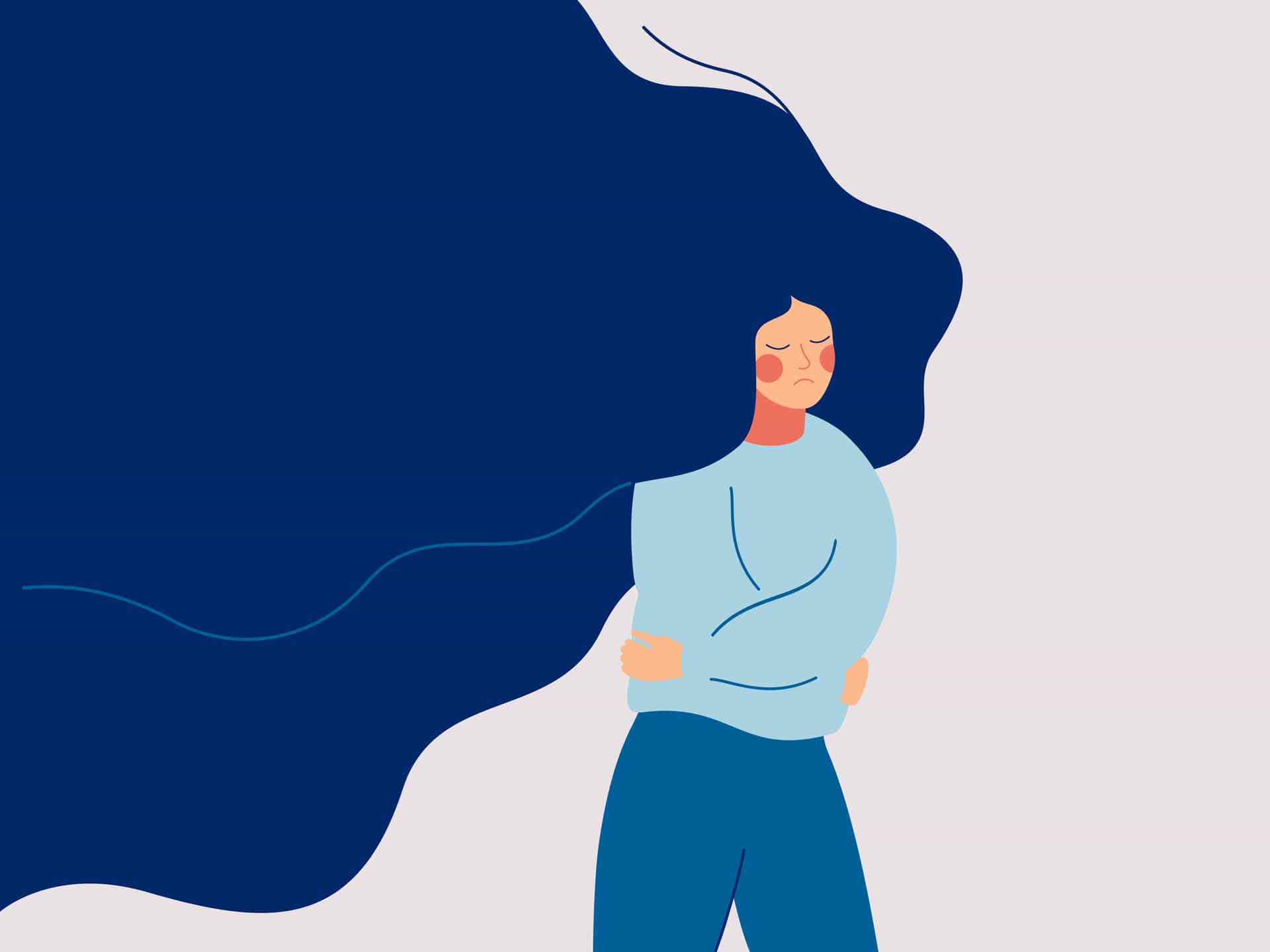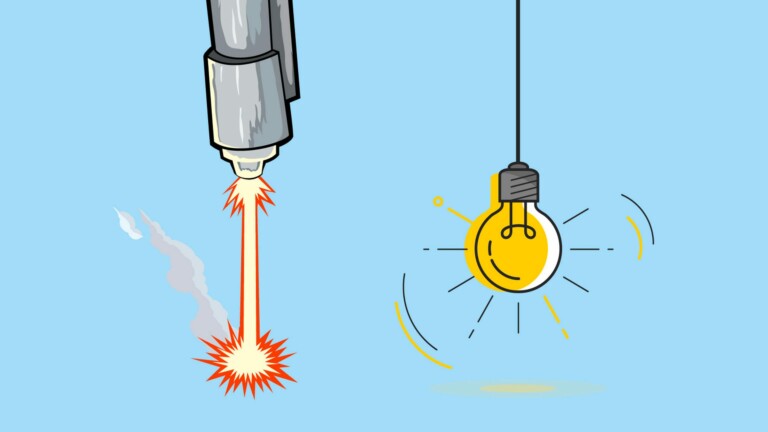

Come superare il rimpianto ed essere più felici

[et_pb_section bb_built=”1″][et_pb_row][et_pb_column type=”4_4″][et_pb_text _builder_version=”3.23.1″ text_text_shadow_horizontal_length=”text_text_shadow_style,%91object Object%93″ text_text_shadow_horizontal_length_tablet=”0px” text_text_shadow_vertical_length=”text_text_shadow_style,%91object Object%93″ text_text_shadow_vertical_length_tablet=”0px” text_text_shadow_blur_strength=”text_text_shadow_style,%91object Object%93″ text_text_shadow_blur_strength_tablet=”1px” link_text_shadow_horizontal_length=”link_text_shadow_style,%91object Object%93″ link_text_shadow_horizontal_length_tablet=”0px” link_text_shadow_vertical_length=”link_text_shadow_style,%91object Object%93″ link_text_shadow_vertical_length_tablet=”0px” link_text_shadow_blur_strength=”link_text_shadow_style,%91object Object%93″ link_text_shadow_blur_strength_tablet=”1px” ul_text_shadow_horizontal_length=”ul_text_shadow_style,%91object Object%93″ ul_text_shadow_horizontal_length_tablet=”0px” ul_text_shadow_vertical_length=”ul_text_shadow_style,%91object Object%93″ ul_text_shadow_vertical_length_tablet=”0px” ul_text_shadow_blur_strength=”ul_text_shadow_style,%91object Object%93″ ul_text_shadow_blur_strength_tablet=”1px” ol_text_shadow_horizontal_length=”ol_text_shadow_style,%91object Object%93″ ol_text_shadow_horizontal_length_tablet=”0px” ol_text_shadow_vertical_length=”ol_text_shadow_style,%91object Object%93″ ol_text_shadow_vertical_length_tablet=”0px” ol_text_shadow_blur_strength=”ol_text_shadow_style,%91object Object%93″ ol_text_shadow_blur_strength_tablet=”1px” quote_text_shadow_horizontal_length=”quote_text_shadow_style,%91object Object%93″ quote_text_shadow_horizontal_length_tablet=”0px” quote_text_shadow_vertical_length=”quote_text_shadow_style,%91object Object%93″ quote_text_shadow_vertical_length_tablet=”0px” quote_text_shadow_blur_strength=”quote_text_shadow_style,%91object Object%93″ quote_text_shadow_blur_strength_tablet=”1px” header_text_shadow_horizontal_length=”header_text_shadow_style,%91object Object%93″ header_text_shadow_horizontal_length_tablet=”0px” header_text_shadow_vertical_length=”header_text_shadow_style,%91object Object%93″ header_text_shadow_vertical_length_tablet=”0px” header_text_shadow_blur_strength=”header_text_shadow_style,%91object Object%93″ header_text_shadow_blur_strength_tablet=”1px” header_2_text_shadow_horizontal_length=”header_2_text_shadow_style,%91object Object%93″ header_2_text_shadow_horizontal_length_tablet=”0px” header_2_text_shadow_vertical_length=”header_2_text_shadow_style,%91object Object%93″ header_2_text_shadow_vertical_length_tablet=”0px” header_2_text_shadow_blur_strength=”header_2_text_shadow_style,%91object Object%93″ header_2_text_shadow_blur_strength_tablet=”1px” header_3_text_shadow_horizontal_length=”header_3_text_shadow_style,%91object Object%93″ header_3_text_shadow_horizontal_length_tablet=”0px” header_3_text_shadow_vertical_length=”header_3_text_shadow_style,%91object Object%93″ header_3_text_shadow_vertical_length_tablet=”0px” header_3_text_shadow_blur_strength=”header_3_text_shadow_style,%91object Object%93″ header_3_text_shadow_blur_strength_tablet=”1px” header_4_text_shadow_horizontal_length=”header_4_text_shadow_style,%91object Object%93″ header_4_text_shadow_horizontal_length_tablet=”0px” header_4_text_shadow_vertical_length=”header_4_text_shadow_style,%91object Object%93″ header_4_text_shadow_vertical_length_tablet=”0px” header_4_text_shadow_blur_strength=”header_4_text_shadow_style,%91object Object%93″ header_4_text_shadow_blur_strength_tablet=”1px” header_5_text_shadow_horizontal_length=”header_5_text_shadow_style,%91object Object%93″ header_5_text_shadow_horizontal_length_tablet=”0px” header_5_text_shadow_vertical_length=”header_5_text_shadow_style,%91object Object%93″ header_5_text_shadow_vertical_length_tablet=”0px” header_5_text_shadow_blur_strength=”header_5_text_shadow_style,%91object Object%93″ header_5_text_shadow_blur_strength_tablet=”1px” header_6_text_shadow_horizontal_length=”header_6_text_shadow_style,%91object Object%93″ header_6_text_shadow_horizontal_length_tablet=”0px” header_6_text_shadow_vertical_length=”header_6_text_shadow_style,%91object Object%93″ header_6_text_shadow_vertical_length_tablet=”0px” header_6_text_shadow_blur_strength=”header_6_text_shadow_style,%91object Object%93″ header_6_text_shadow_blur_strength_tablet=”1px” box_shadow_horizontal_tablet=”0px” box_shadow_vertical_tablet=”0px” box_shadow_blur_tablet=”40px” box_shadow_spread_tablet=”0px” z_index_tablet=”500″]
Tutti, a volte, abbiamo dei rimpianti. Tutti tendiamo a pensare, qualche volta, cosa sarebbe accaduto se, come sarebbe stata la nostra vita se, che persone saremmo diventate se. Alcuni indugiano maggiormente sul rimpianto, altri molto meno. E’ una manifestazione della propria umanità, è pressoché universale ed è quasi impossibile sottrarsi ad essa.
Il rimpianto va oltre la mera percezione di avere perso delle opportunità per legarsi ad una concezione generale della propria persona. Due domande principali hanno guidato i ricercatori che hanno indagato sul rimpianto:
* Hai una visione chiara di chi sei e stai incarnando la persona che vuoi essere?
* Stai vivendo la tua vita in un modo che soddisfa i tuoi doveri e responsabilità verso gli altri?
La prima domanda ha a che fare con la discrepanza tra l’immagine reale e quella ideale di se stessi, mentre la seconda attiene al divario tra il sé attuale e quello che si dovrebbe essere.
La teoria della discrepanza
Secondo lo psicologo Edward Higgins il sé di una persona si compone di tre parti:
* reale: è il concetto di base che abbiamo di noi stessi, la rappresentazione delle qualità e dei tratti che crediamo di possedere
* ideale: è la rappresentazione degli attributi che si desidererebbe avere idealmente ed è correlata ai propri obiettivi e desideri futuri
* dovuto: è la rappresentazione delle qualità che si ritiene che si dovrebbero possedere, in base ai doveri e agli obblighi sociali.
Quando ci sono delle discrepanze tra queste parti del sé sorgono delle emozioni negative. Quando c’è discrepanza tra sé reale e ideale affiorano dispiacere, tristezza, delusione; quando, invece, c’è divario tra sé reale e dovuto sorgono paura, vergogna, senso di colpa. Sulla base di questa teoria si ipotizza che il rimpianto nasca dal divario tra se attuale e ideale e che il risultato di tale conflitto interiore possa rischiare di compromettere, nel lungo termine, il benessere, la salute e la prospettiva di vita.
[/et_pb_text][slider_article _builder_version=”3.23.1″ max=”8″ text_shadow_horizontal_length=”text_shadow_style,%91object Object%93″ text_shadow_horizontal_length_tablet=”0px” text_shadow_vertical_length=”text_shadow_style,%91object Object%93″ text_shadow_vertical_length_tablet=”0px” text_shadow_blur_strength=”text_shadow_style,%91object Object%93″ text_shadow_blur_strength_tablet=”1px” module_text_shadow_horizontal_length=”module_text_shadow_style,%91object Object%93″ module_text_shadow_horizontal_length_tablet=”0px” module_text_shadow_vertical_length=”module_text_shadow_style,%91object Object%93″ module_text_shadow_vertical_length_tablet=”0px” module_text_shadow_blur_strength=”module_text_shadow_style,%91object Object%93″ module_text_shadow_blur_strength_tablet=”1px” box_shadow_horizontal_tablet=”0px” box_shadow_vertical_tablet=”0px” box_shadow_blur_tablet=”40px” box_shadow_spread_tablet=”0px” z_index_tablet=”500″ /][et_pb_text _builder_version=”3.23.1″ text_text_shadow_horizontal_length=”text_text_shadow_style,%91object Object%93″ text_text_shadow_horizontal_length_tablet=”0px” text_text_shadow_vertical_length=”text_text_shadow_style,%91object Object%93″ text_text_shadow_vertical_length_tablet=”0px” text_text_shadow_blur_strength=”text_text_shadow_style,%91object Object%93″ text_text_shadow_blur_strength_tablet=”1px” link_text_shadow_horizontal_length=”link_text_shadow_style,%91object Object%93″ link_text_shadow_horizontal_length_tablet=”0px” link_text_shadow_vertical_length=”link_text_shadow_style,%91object Object%93″ link_text_shadow_vertical_length_tablet=”0px” link_text_shadow_blur_strength=”link_text_shadow_style,%91object Object%93″ link_text_shadow_blur_strength_tablet=”1px” ul_text_shadow_horizontal_length=”ul_text_shadow_style,%91object Object%93″ ul_text_shadow_horizontal_length_tablet=”0px” ul_text_shadow_vertical_length=”ul_text_shadow_style,%91object Object%93″ ul_text_shadow_vertical_length_tablet=”0px” ul_text_shadow_blur_strength=”ul_text_shadow_style,%91object Object%93″ ul_text_shadow_blur_strength_tablet=”1px” ol_text_shadow_horizontal_length=”ol_text_shadow_style,%91object Object%93″ ol_text_shadow_horizontal_length_tablet=”0px” ol_text_shadow_vertical_length=”ol_text_shadow_style,%91object Object%93″ ol_text_shadow_vertical_length_tablet=”0px” ol_text_shadow_blur_strength=”ol_text_shadow_style,%91object Object%93″ ol_text_shadow_blur_strength_tablet=”1px” quote_text_shadow_horizontal_length=”quote_text_shadow_style,%91object Object%93″ quote_text_shadow_horizontal_length_tablet=”0px” quote_text_shadow_vertical_length=”quote_text_shadow_style,%91object Object%93″ quote_text_shadow_vertical_length_tablet=”0px” quote_text_shadow_blur_strength=”quote_text_shadow_style,%91object Object%93″ quote_text_shadow_blur_strength_tablet=”1px” header_text_shadow_horizontal_length=”header_text_shadow_style,%91object Object%93″ header_text_shadow_horizontal_length_tablet=”0px” header_text_shadow_vertical_length=”header_text_shadow_style,%91object Object%93″ header_text_shadow_vertical_length_tablet=”0px” header_text_shadow_blur_strength=”header_text_shadow_style,%91object Object%93″ header_text_shadow_blur_strength_tablet=”1px” header_2_text_shadow_horizontal_length=”header_2_text_shadow_style,%91object Object%93″ header_2_text_shadow_horizontal_length_tablet=”0px” header_2_text_shadow_vertical_length=”header_2_text_shadow_style,%91object Object%93″ header_2_text_shadow_vertical_length_tablet=”0px” header_2_text_shadow_blur_strength=”header_2_text_shadow_style,%91object Object%93″ header_2_text_shadow_blur_strength_tablet=”1px” header_3_text_shadow_horizontal_length=”header_3_text_shadow_style,%91object Object%93″ header_3_text_shadow_horizontal_length_tablet=”0px” header_3_text_shadow_vertical_length=”header_3_text_shadow_style,%91object Object%93″ header_3_text_shadow_vertical_length_tablet=”0px” header_3_text_shadow_blur_strength=”header_3_text_shadow_style,%91object Object%93″ header_3_text_shadow_blur_strength_tablet=”1px” header_4_text_shadow_horizontal_length=”header_4_text_shadow_style,%91object Object%93″ header_4_text_shadow_horizontal_length_tablet=”0px” header_4_text_shadow_vertical_length=”header_4_text_shadow_style,%91object Object%93″ header_4_text_shadow_vertical_length_tablet=”0px” header_4_text_shadow_blur_strength=”header_4_text_shadow_style,%91object Object%93″ header_4_text_shadow_blur_strength_tablet=”1px” header_5_text_shadow_horizontal_length=”header_5_text_shadow_style,%91object Object%93″ header_5_text_shadow_horizontal_length_tablet=”0px” header_5_text_shadow_vertical_length=”header_5_text_shadow_style,%91object Object%93″ header_5_text_shadow_vertical_length_tablet=”0px” header_5_text_shadow_blur_strength=”header_5_text_shadow_style,%91object Object%93″ header_5_text_shadow_blur_strength_tablet=”1px” header_6_text_shadow_horizontal_length=”header_6_text_shadow_style,%91object Object%93″ header_6_text_shadow_horizontal_length_tablet=”0px” header_6_text_shadow_vertical_length=”header_6_text_shadow_style,%91object Object%93″ header_6_text_shadow_vertical_length_tablet=”0px” header_6_text_shadow_blur_strength=”header_6_text_shadow_style,%91object Object%93″ header_6_text_shadow_blur_strength_tablet=”1px” box_shadow_horizontal_tablet=”0px” box_shadow_vertical_tablet=”0px” box_shadow_blur_tablet=”40px” box_shadow_spread_tablet=”0px” z_index_tablet=”500″]
Quando si sperimenta un contrasto tra sé reale e dovuto induce con maggiore frequenza ad agire per adeguarsi a come si dovrebbe essere e comportarsi. Al contrario, invece, non essere in linea con il proprio sé ideale viene percepito come meno urgente da sanare, più procrastinabile e come tale più soggetto a creare rimpianti duraturi e profondi nel lungo periodo.
Cosa ci suscita maggiormente rimpianto ?
Una ricerca condotta da Davidai e Gilovich pubblicata sulla rivista Emotion si è basata su sei diverse situazioni. Nella prima è stato chiesto ai partecipanti che per cosa avevano maggiore rimpianto tra non vivere secondo la propria immagine ideale o quella dovuta. La maggior parte delle persone ha risposto che il maggiore rimpianto riguardava il non essere la persona che avrebbero potuto essere.
Nella seconda situazione e nella terza ai partecipanti è stato domandato di ricordare un rimpianto specifico che hanno sperimentato e se si basava più sulla loro immagine ideale o dovuta. Anche in questo caso il riferimento era prevalentemente alla loro immagine ideale.
Negli studi quattro e cinque si è cercato di capire se il rimpianto che attiene al proprio sé dovuto viene affrontato più rapidamente ed efficacemente rispetto a quello ideale ed è effettivamente quello che è stato confermato, con la convinzione di fondo che ciò che riguarda il proprio ideale si sarebbe potuto raggiungere anche in seguito. Si ipotizza che tale comportamento sia dovuto alla pressione a cui ci si sente sottoposti di fronte agli altri e al desiderio di essere accettati da loro.
Infine, nell’ultimo studio sono stati indagati i rimpianti risolti e non. Anche in questo caso si è rilevato che i rimpianti legati al sé ideale tendono a suscitare meno azioni e comportamenti finalizzati alla loro risoluzione, al contrario di quelli legati al sé dovuto per i quali ci sente maggiormente sotto pressione per dissolverli.
In conclusione
Tutti abbiamo dei rimpianti. Tutti, a volte, pensiamo a come sarebbe stata la nostra vita, il lavoro, gli affetti, se avessimo preso decisioni e intrapreso azioni differenti. I rimpianti, però, non sono tutti uguali. Essi differiscono nel numero e nell’intensità in base alla concezione di noi stessi. Tutto dipende da chi siamo e da chi desideriamo essere.
Se ci definiamo in base al dover essere, agli obblighi, alle responsabilità, tendiamo ad ascoltare e osservare molto gli altri, a tenere in considerazione le loro opinioni, aspettative, desideri e ad adattarci ad essi. Se, al contrario, siamo guidati da norme, valori, percezioni, sensazioni, convinzioni, desideri legati ad un nostro ideale interiore saremo meno influenzati dalle aspettative esterne e più tendenti al rispetto di quello che abbiamo dentro.
Sapere se siamo più guidati da un sé ideale o dovuto può essere di grande importanza per minimizzare il peso dei rimpianti e costruirsi una vita che sia maggiormente soddisfacente, realizzata, serena e felice, con il minimo possibile dei rimpianti.
[/et_pb_text][/et_pb_column][/et_pb_row][/et_pb_section]




